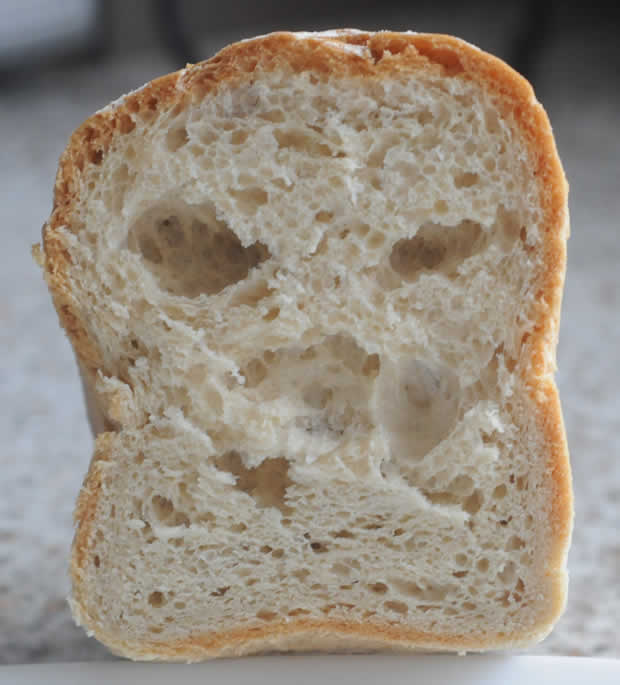To get punters through the doors, supermarkets have entered a price war over bread, with $1 now the norm. As we saw in our book Appetite for Destruction, the trouble is that with white bread you get what you pay for. Like most fake food, there are costs with white bread that don’t appear on the price tag.
White bread is stripped of good stuff
In their natural form, grains contain some good stuff. This is why things like bread are considered a ‘staple’ and why they once made up the largest part of the old food pyramid. The trouble is that white bread has most of these good nutrients (up to 75% in some cases) stripped out during the manufacturing process.
White bread is a win-win for breadmakers, because not only do some people prefer the taste (you’ll see why below), but without the nutrients in (especially oils from the germ mixed), white flour keeps for longer too. This allows for the mass production of white flour and white bread. Hence why supermarkets can sell loaves for $1.
Certainly consumers are convinced. White bread is the usual choice of around one third of Kiwis, with another 50% choosing ‘light grain’ bread, which is also mostly made of white flour. Don’t be fooled – white bread with a few seeds thrown in (like Molenberg) is still pretty much white bread. Only around 12% of Kiwis regularly choose ‘heavy’ grain breads.
The only loser in this is our health. Most of our modern health woes are because our diet has too much energy and insufficient nutrients, and white bread is adding to this problem. Given that bread is such a major part of our diet, merely switching to eating wholegrain bread could solve many of our fibre and other nutrient deficiencies. And before you say anything – the white bread with the fibre and other nutrients (vitamins and minerals) stuffed back in isn’t as good as the real thing. We simply aren’t good enough at food manufacturing to beat Mother Nature’s recipe.
White bread is pretty much the same as eating sugar
The way bread is made doesn’t only alter the nutritional content of bread, it alters the way our body digests it. And when it comes to digesting carbohydrates like bread in particular, this is really important.
Processing of grains tends to break down the natural structures of the food, making them easier to digest. Without the fibre and nutrients of the wholegrain wheat, eating white bread is almost the same as eating sugar. That is probably why we like white bread so much, it appeals to our primeval craving for high energy foods (like refined sugar and fat).
Here is what happens when you eat a white bread compared to wholemeal stuff. Without the nutrients like fibre the body digests it really quickly. Instead of getting a slow, steady release of energy, the body gets a flood all at once. So much that the body struggles to deal with it all, and usually ends up storing some as fat. Once the body has dealt with the spike, it is left with no fuel, so the eater feels tired and craves more food. This is the classic post-sugar crash – and it applies to white bread too. This hunger usually means we end up eating more, which in turn makes us fatter.
Is white bread really cheap and filling?
Many people buy white bread because it is cheap and bulky and so they think it will fill them up. They may not understand or may not be worried about the lack of nutrients, the energy density or the way white bread is digested. They just want something that will fill their kids’ stomachs within a budget, which is fair enough. But are these refined grains really as filling as we think
First up, cheap breads are more likely to pull a Jesus trick – magically making more bread out of nothing. The reason they are so fluffy is because they are plumped up with air and water. When it comes to bread, weight is a better guide of what you are getting for your money than size.
And second, if you eat white bread your body will burn it quicker (even if it is storing some of it as fat) so you will end up hungry sooner. Unless you have fantastic self-control you will end up eating more overall.
So in reality, $1 white bread is a false economy. Paying a bit more for wholegrain bread is not only better for our health, it sustains us for longer, which will cut the rest of your grocery bill.
If you’re unsure about which bread to buy, here is a simple rule of thumb called the ‘flap test’. If you hold a slice of bread up and wiggle it and it flaps around in the breeze rather than breaking, then it probably isn’t much good.

